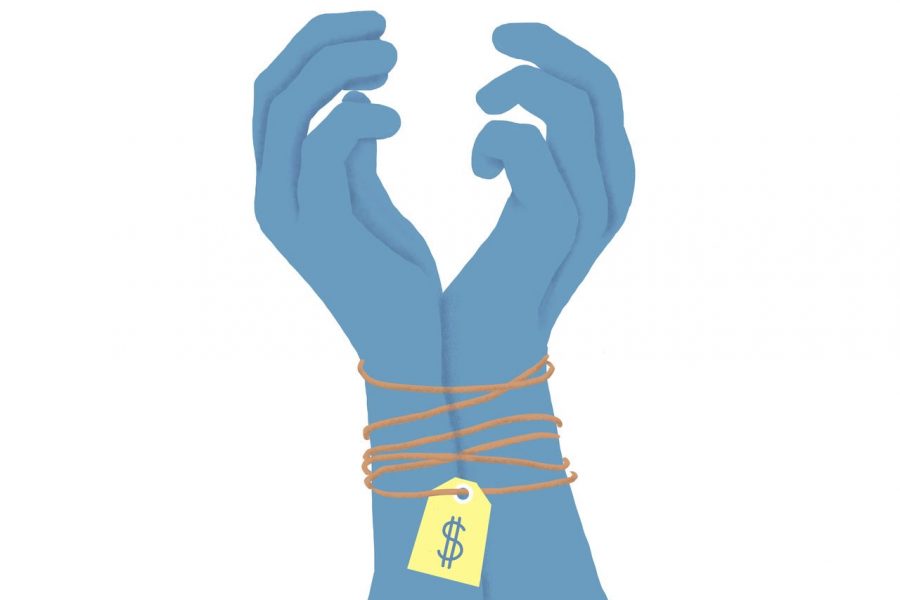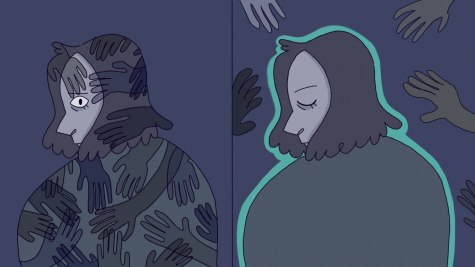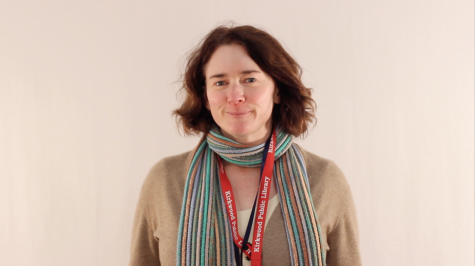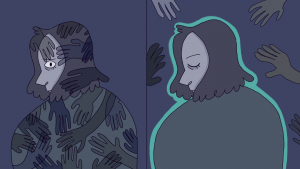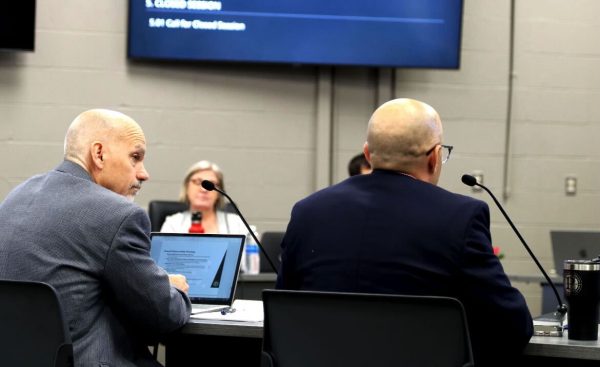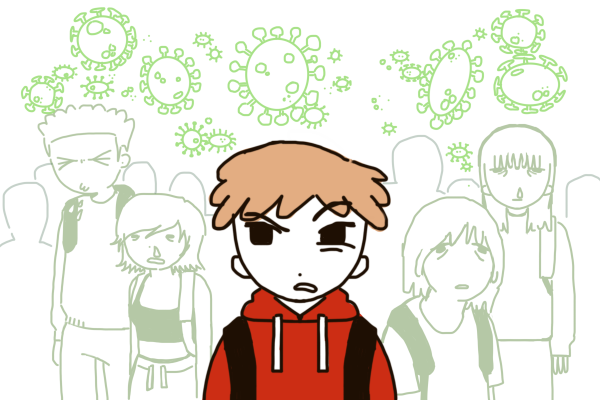Issues: Human trafficking
As of 2017, Missouri is one of the top 20 states with the most human trafficking, according to the National Human Trafficking Hotline.
All she wanted was a ride home. All she needed was for him to drive her to her small home in the suburbs. Instead, he took her to a small hotel room and forced her to sit and wait. He made her wait for the first of many sex clients.
According to the National Human Trafficking Hotline, over 589 trafficking cases occur annually in St. Louis. St. Louis is the seventh most called city per capita (100,000 people) regarding human trafficking. John Halliday, detective of Criminal Investigations, has dealt with sex trafficking first hand.
“A lot of prostitutes who are from all over the United States end up in St. Louis at some point of time,” Halliday said. “A lot of the times pimps travel to avoid detection from the police.”
According to Halliday, there are multiple reasons people find themselves in the trafficking industry including poverty, drug addiction or forced labor. Halliday said the most common form of sex trafficking he has observed in St. Louis is forced prostitution.
“Typically, we see more prostitution cases,” Halliday said. “More often in a boyfriend/girlfriend scenario where the female is forced by the male to commit the act of prostitution to bring in money. I think a lot of people think of a pimp as somebody who has 20 prostitutes working for them, but typically it’s just one male and one female funding all aspects of their life.”
Do I think sex trafficking will decrease? Yes. Am I confident it will ever end? In today’s society, I’m not so sure.
— John Halliday
As stated by Halliday, in order to arrange meetings with clients, prostitutes utilize technology to their advantage. One website where trafficking took place was Backpage. Backpage was a website where adult advertisements were made for sex workers and their clients to correspond and arrange meetings, before being shut down by the government in April 2018.
“Recently, Backpage was taken off of the internet,” Halliday said. “It was a big step to squash the commercial sex industry, but also made it more difficult for us to investigate because that was a big source for locating prostitutes during our sting operations.”
According to the National Human Trafficking Hotline, trafficking has increased in St. Louis by about 50 percent (214 to 420 cases) since 2012. One popular spot trafficking occurs is downtown.
“The St. Louis Airport has taken a downturn the past couple decades,” Halliday said. “The hotels lowering their prices due to being less profitable makes them the most dense area of prostitution.”
According to Halliday, the media hasn’t lived up to the task of covering sex trafficking. He said that trafficking deserves more educational media coverage on the topic.
“Human trafficking is a billion dollar industry,” Halliday said. “Lately it’s been covered more in the news. 6 to 10 years prior to that, you typically only heard of sex trafficking if someone of fame was arrested with a prostitute. I don’t know if the media puts out these stories to help with the problem with human trafficking or because they know it is a hot topic that can boost their ratings.”
Hallie Klopfenstein, sophomore, said she is passionate about the topic of sex trafficking. She said it is a topic that isn’t spoken about often, but is rather interesting.
“I’m not surprised trafficking is a big issue in STL. I’ve read about how humans are sold and put up for rent,” Klopfenstein said. “It’s crazy how social media can have such a negative impact on people from the trafficking business.”
Klopfenstein said she had to learn about sex trafficking on her own through the internet. According to the International Labor Organization, it is estimated that there are 4.5 million people trapped in forced sexual exploitation globally.
“[Trafficking] is a touchy subject,” Klopfenstein said. “People act like it doesn’t happen so they don’t have to feel uncomfortable discussing it. Schools should educate students on signs that people are being trafficked and tips to keep themselves safe.”
Jessica Lydon, manager of personal development at The Covering House, assists with the execution of giving previously trafficked girls a home to stay in. The Covering House is a non-profit organization to assist victims of sex trafficking transition back into everyday life. Lydon said they see multiple cases every year.
”The majority of the cases we see are domestic kids from St. Louis,” Lydon said. “Our most common cases are runaways who don’t have a safe environment at home. The girls are usually around 13 to 15 years old.”
After coming into the facility, patients go through a program provided by The Covering House. This gives them a home, food, water and therapy to help girls cope with their experiences while being trafficked.
“While they’re with us, they’re going to be working through therapeutic phases of the program,” Lydon said. “We do a holistic approach with several different types of therapy in order to make connections and grow bonds between girls of the house and staff to build those healthy, trusting relationships.”
As sex trafficking is an issue that has only grown over the past six years, authorities are still on the lookout for more efficient ways to help extinguish the problem. According to Halliday, it is a lot harder than it seems.
“Coca Cola makes a soda that they can sell only once for $1.50, whereas a trafficked victim can be used over and over again,” Halliday said. “Do I think sex trafficking will decrease? Yes. Am I confident it will ever end? In today’s society, I’m not so sure.”
In St. Louis, human trafficking is a growing issue. Police task forces brainstorm new ways to combat the problem everyday, along with coming up with ideas to help inform and educate others on signs of trafficking and how people can help prevent and report the issue.
Your donation will support the student journalists of Kirkwood High School. Your contribution will allow us to purchase equipment and cover our annual website hosting costs.
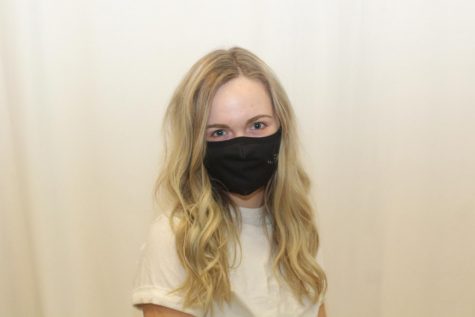
she/her
Favorite musical artist: Post Malone
Favorite quote: "Yeah, you pulled an all nighter. An all nighter in bed." - Tom Mueller
Favorite...

Interests: I love creating art, from painting to embroidery. I also collect zines and comics!
Favorite musical artist: Mike Krol <3
Favorite...


